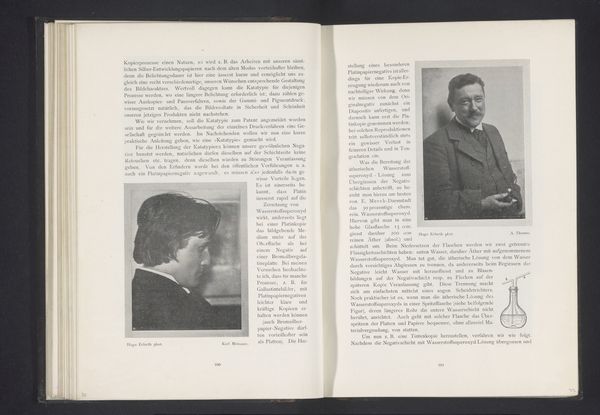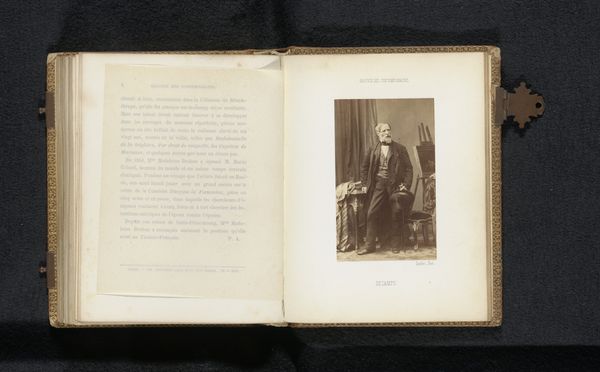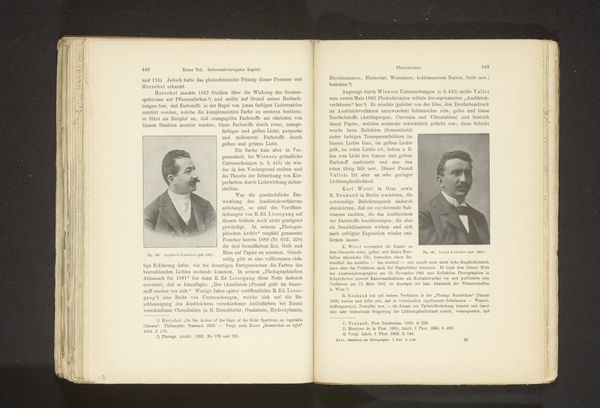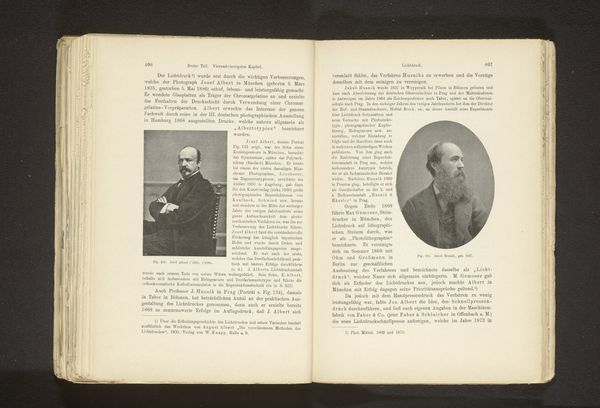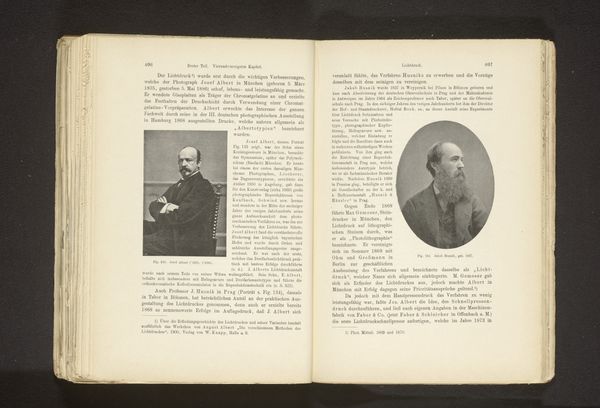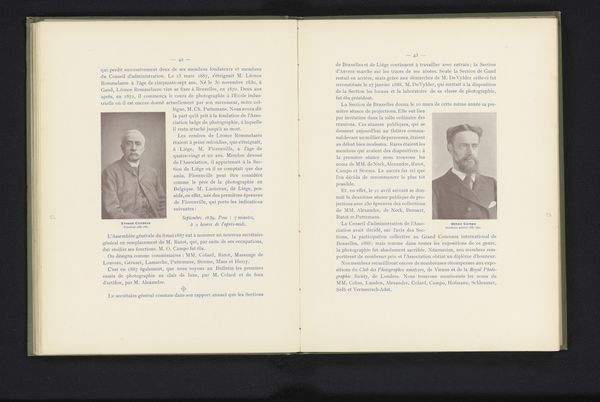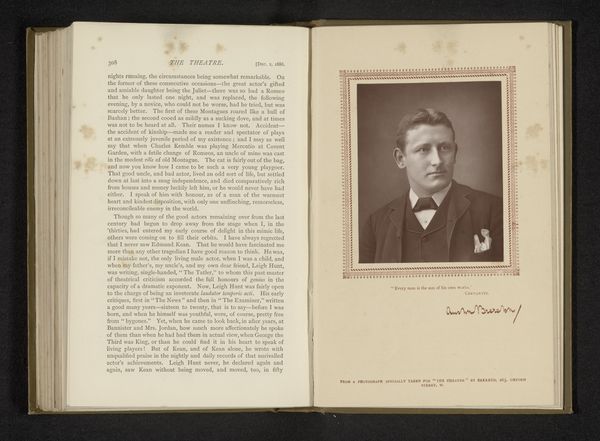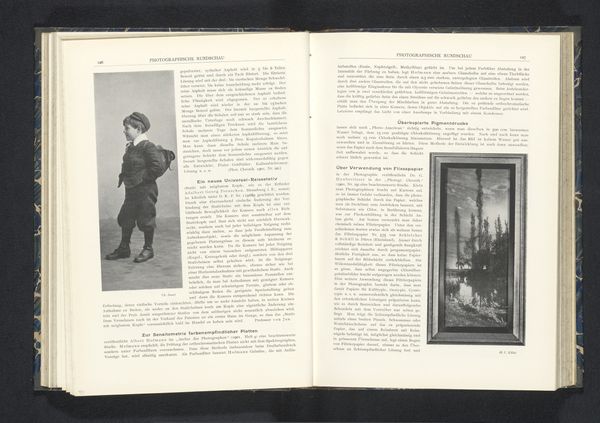
print, daguerreotype, photography
#
portrait
#
medieval
# print
#
book
#
daguerreotype
#
photography
#
realism
Dimensions: height 140 mm, width 90 mm
Copyright: Rijks Museum: Open Domain
Curator: This intriguing piece is titled "Fotoreproductie van vermoedelijk een portret van Thomas Edison," or "Photoreproduction of a Presumed Portrait of Thomas Edison." It's dated before 1892 and appears to be a print. Editor: There's a starkness to it. The high contrast, and the way it's presented in the open book. The mechanical reproduction within a bound volume almost drains the image of personality, yet still conveys authority. Curator: That perceived lack of personality may be connected to the explosion of photography as documentation during this period. Images of Edison and others gained distribution beyond art circles. Their circulation shaped public perception. The "medieval" or antiquated appearance comes in contrast with what Edison represents. Editor: I'm intrigued by the process here. We see the image of Edison mediated through photographic and printing technologies and assembled into a bound object, namely, the book. The paper's texture, the ink's qualities; how that physical assembly contributes to Edison's image as an inventor or industrial figure, or even the distribution of scientific knowledge is noteworthy. Curator: Indeed. Early photography like the daguerreotype had significant societal effects on how scientists and others sought to represent themselves and gain recognition. It became increasingly vital for the scientific community, including inventors, to engage with photographic technology, lending credibility through circulated imagery. Editor: What I am drawn to as well is thinking of it as a photomechanical print in a book and pondering how that mass distribution affects our perception of the man and the myth he embodied, shifting the context away from Edison’s specific innovations to encompass technological progress as a whole. It turns an individual into something almost like a corporate entity. Curator: Exactly. Edison's portrait then functions as a symbol—a shorthand for technological progress—divorced from his physical presence or individual genius and subsumed by a burgeoning industrial culture. It emphasizes a transition to mechanically reproduced knowledge and imagery. Editor: I see that play of scale between the reproduced man and the tangible object in the context of dissemination very differently now. Thanks for your perspective. Curator: And you for pointing to the materials. It really puts the societal impact of these portraits and other figures into sharper focus.
Comments
No comments
Be the first to comment and join the conversation on the ultimate creative platform.
